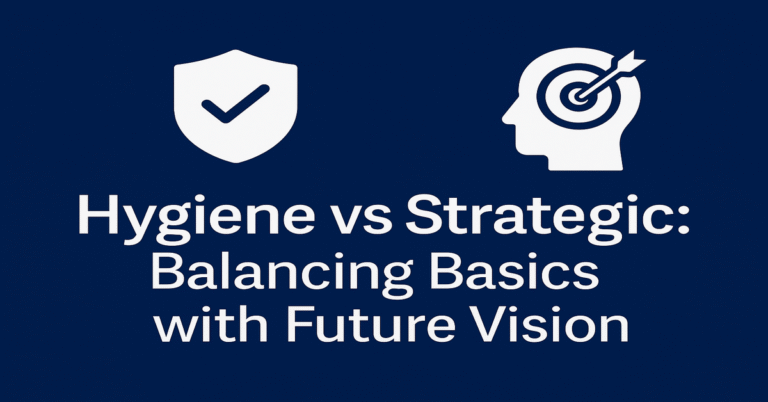
Storytelling is at the heart of human communication. From ancient myths to modern digital campaigns, stories give meaning to facts, emotions, and experiences. In today’s content-driven world, one of the most powerful approaches is to take a single topic and expand it into multiple stories—each with its own perspective, depth, and emotional connection. This approach, known here as “Your Topics Multiple Stories”, is not just a creative exercise; it is a strategic framework for educators, writers, businesses, and influencers to capture audience attention across multiple dimensions.
By converting one broad theme into different storylines, creators can reach diverse audiences, highlight various aspects of the subject, and sustain long-term engagement. Instead of producing one monolithic piece of content, they can deliver multiple, interconnected narratives that enrich the overall understanding of the topic.
This article explores the philosophy, techniques, and benefits of the Your Topics Multiple Stories approach, providing insights into its applications, challenges, and future relevance.
Understanding the Concept of “Your Topics Multiple Stories”
What Does It Mean?
The idea revolves around choosing one main theme (your topic) and breaking it into multiple narratives (your stories). Each story may highlight a different angle, character, event, or interpretation while staying connected to the central idea.
For example:
- Topic: Climate Change
- Multiple Stories:
- Story of a farmer facing drought.
- Story of a city dealing with floods.
- Story of technology reducing emissions.
- Story of a child learning about climate in school.
Why It Works
- Depth and Diversity: Offers layered insights instead of oversimplification.
- Relatability: Different audiences find stories they connect with.
- Retention: Multiple stories keep audiences engaged over time.
- Creativity: Encourages flexibility and innovation in storytelling.
The Importance of Story Multiplicity
In Communication
People understand complex topics better when broken into narratives. A single perspective may feel limiting, while multiple stories provide clarity and relatability.
In Education
Teachers use multiple examples and case studies to ensure students grasp abstract concepts. “Your Topics Multiple Stories” is a natural educational method.
In Marketing
Brands tell multiple stories around a product—customer testimonials, behind-the-scenes processes, and innovation journeys—to build trust and relatability.
Core Principles of Multi-Story Content
- Central Topic Consistency: All stories must relate to the main theme.
- Diverse Angles: Each story should highlight a unique perspective.
- Emotional Connection: Stories should resonate personally with audiences.
- Authenticity: Genuine narratives inspire trust and engagement.
- Scalability: Stories can be adapted across formats—articles, videos, podcasts, and infographics.
How to Develop Multiple Stories from One Topic
Step 1: Identify the Central Theme
Choose a subject broad enough to create multiple narratives, yet focused enough to maintain cohesion.
Step 2: Brainstorm Perspectives
List different stakeholders, environments, or timeframes associated with the theme.
Step 3: Structure Narratives
Decide the format for each story—case study, interview, fictionalized narrative, or visual storytelling.
Step 4: Connect the Stories
Ensure each narrative ties back to the central theme, creating a story ecosystem.
Example Table: Breaking a Topic into Multiple Stories
| Main Topic | Story Angle 1 | Story Angle 2 | Story Angle 3 | Story Angle 4 |
|---|---|---|---|---|
| Health & Wellness | Journey of a fitness coach | Diet transformation case | Mental health awareness | Technology in fitness |
| Education Reform | Teacher’s perspective | Student experiences | Policy maker’s viewpoint | Parent involvement |
| Digital Technology | Startup innovation story | User case study | Ethical challenges | Future predictions |
Applications of “Your Topics Multiple Stories”
In Journalism
Your Topics Multiple Stories, expert analyses, and timeline breakdowns.
In Blogging
Your Topics Multiple Stories bloggers expand a theme (e.g., “sustainable living”) into multiple posts: eco-friendly homes, minimalism, renewable energy, sustainable travel.
In Business Storytelling
Companies turn their mission into stories of employees, customers, and product evolution.
In Education
Textbooks break down complex scientific topics into everyday examples and real-life case studies.
Challenges in Creating Multiple Stories
Risk of Redundancy
If stories overlap too much, they may bore audiences.
Maintaining Consistency
Diverse stories must still remain tied to the central theme.
Balancing Creativity and Accuracy
Some stories may overemphasize creativity and lose factual accuracy Your Topics Multiple Stories.
Benefits of Multi-Storytelling
- Audience Expansion: Reaches different demographics with different stories.
- Longevity of Content: Keeps one topic alive through multiple story angles.
- Enhanced Understanding: Breaks down complexity into digestible pieces.
- SEO and Digital Advantage: More stories equal more visibility online.
- Cultural Relevance: Stories adapt to diverse social and cultural contexts.
Comparison: Single Story vs. Multiple Stories
| Aspect | Single Story | Multiple Stories |
|---|---|---|
| Depth of Content | Limited to one perspective | Covers diverse perspectives |
| Audience Reach | Narrow | Broad, multiple demographics |
| Engagement | Short-term | Long-term sustained interest |
| Application | One-time communication | Reusable, adaptable, evergreen |
Real-World Case Examples
Global Health Campaigns
Organizations often build one campaign theme (e.g., vaccination) with multiple stories: a doctor’s role, a parent’s relief, a community’s transformation.
Brand Marketing Example
A coffee brand may tell your topics multiple stories: the farmer’s journey, roasting techniques, customer experiences, and environmental sustainability.
Education Example
A history topic can be told through stories of leaders, ordinary citizens, and timelines—each offering a unique view.
Future of Multi-Storytelling
As attention spans shorten, multi-story formats will dominate digital platforms:
- Micro-stories on social media.
- Long-form multi-part articles.
- Interactive multi-perspective documentaries.
The future lies in immersive ecosystems of narratives, where one topic becomes a cluster of interconnected stories across media.
Conclusion
The concept of “Your Topics Multiple Stories” captures the essence of modern communication. It emphasizes the power of story multiplicity, where a single theme expands into diverse, relatable, and engaging narratives. This method is not just a content strategy but a cultural necessity in today’s world, where audiences demand both depth and diversity.
By mastering this approach, creators—whether writers, marketers, teachers, or influencers—can transform a single idea into a living network of stories, ensuring greater impact, longevity, and connection.
FAQs
Q1: What does “Your Topics Multiple Stories” mean?
A: It refers to breaking one central topic into multiple narratives that highlight different perspectives, experiences, or contexts.
Q2: Why are multiple stories better than one?
A: They provide depth, diversity, and relatability, reaching a broader audience while sustaining long-term engagement.
Q3: How can businesses use multiple stories?
A: By telling stories of employees, customers, sustainability, and product development—all linked to the brand’s mission.
Q4: What challenges exist in creating multiple stories?
A: Risks include redundancy, inconsistency, and difficulty balancing creativity with accuracy.
Q5: Is this method useful for education?
A: Yes, it helps teachers explain complex topics by presenting multiple examples, case studies, and perspectives.







